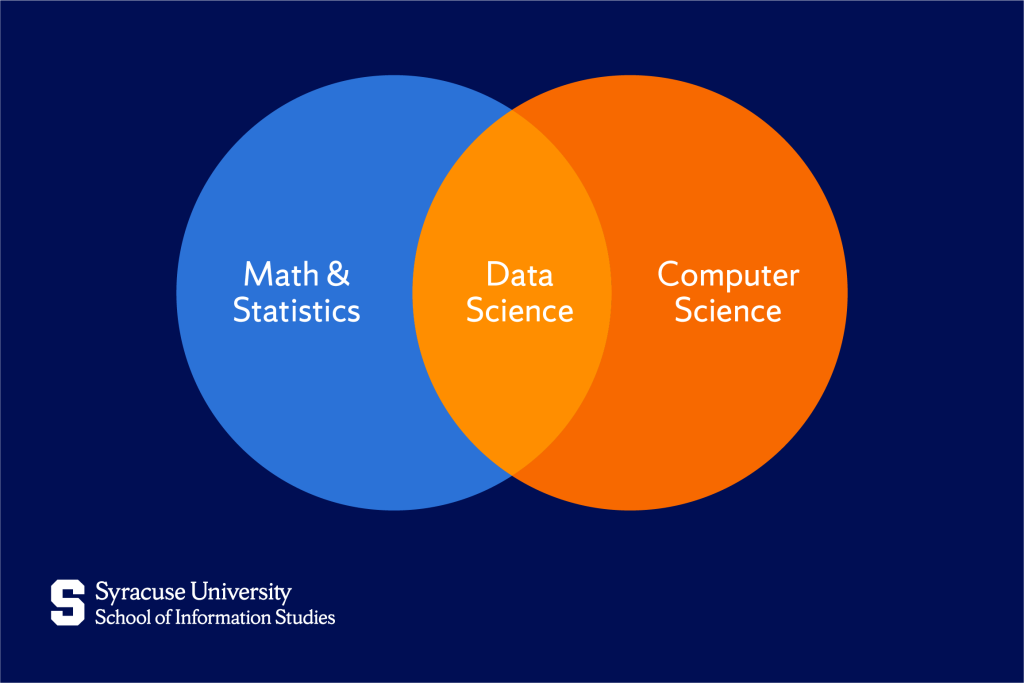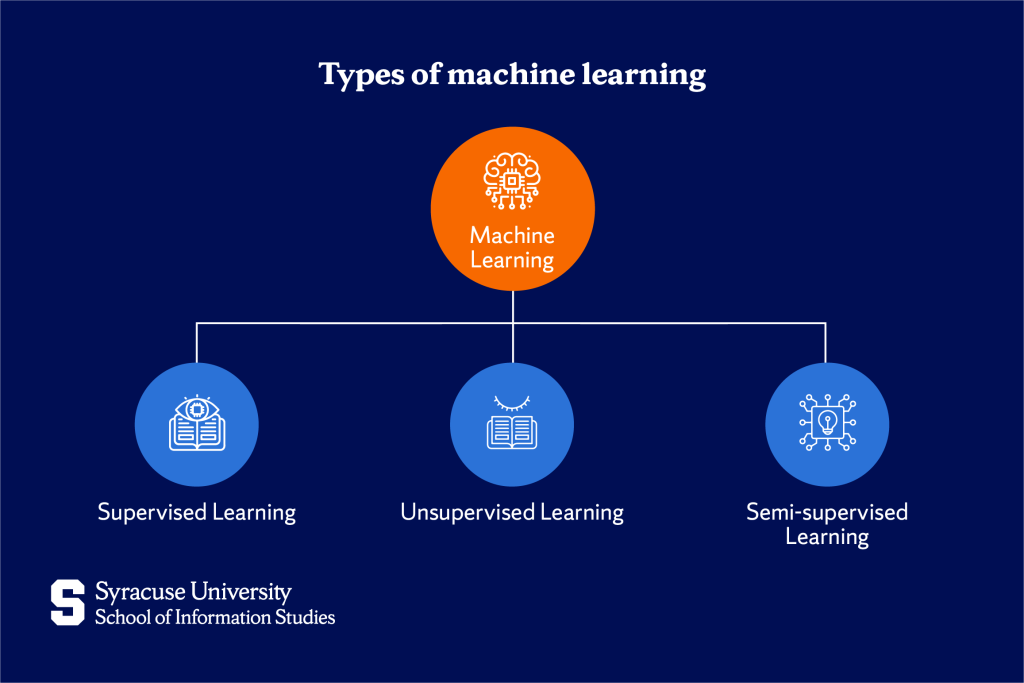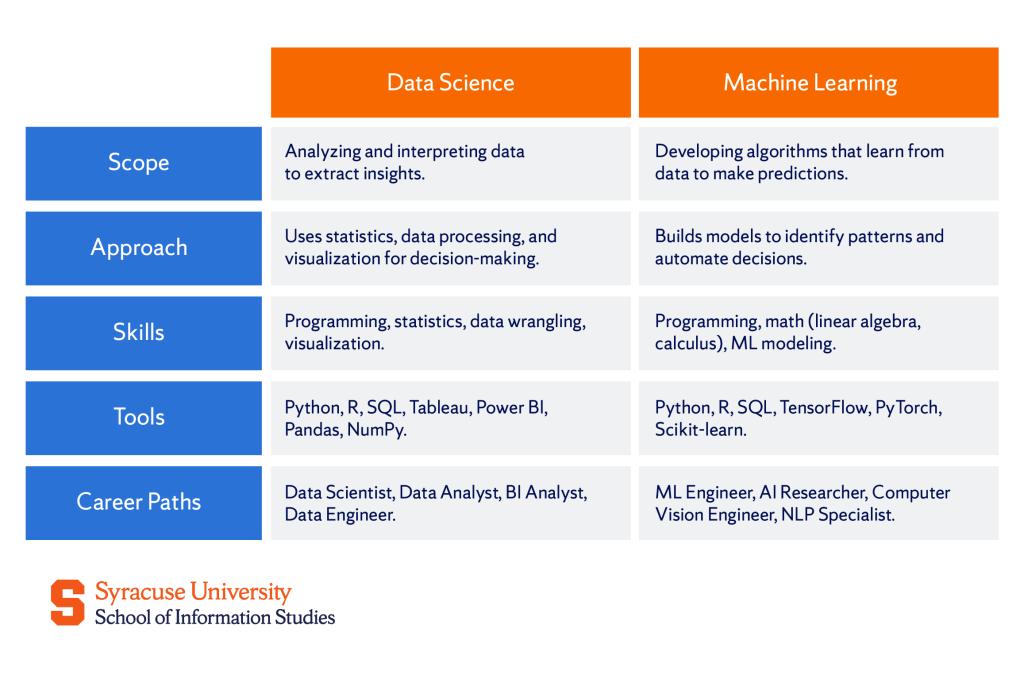Key Takeaways
- Data science combines statistics and computing to analyze data and uncover meaningful insights.
- Machine learning (ML) creates algorithms that enable computers to learn patterns and make decisions without explicit programming.
- Data science and ML differ in scope, approach, goals, techniques, tools, and career paths.
There are many fields connected to technology and data—many of them revolve around making sense of information, using it to drive decisions, and even predicting future trends. Data science and machine learning have been among the most influential fields in recent years, bringing major advancements across industries.
As their impact continues to grow, those eager to enter this space must understand data science vs. machine learning—how they differ, how they overlap, and what career paths they open.
What Is Data Science?
Data science is a multidisciplinary field that emerged as an intersection of statistics and computer science. It is used to extract insights from data through various analytical and computational techniques.

Data science relies on several essential components, including:
- Data collection and management
- Exploratory Data Analysis (EDA)
- Applying algorithms to extract insights or make predictions
- Presenting results
What Is Machine Learning?
Machine learning (ML) is a subfield of data science. It focuses on developing algorithms that, without being explicitly programmed, enable computers to learn patterns and make decisions. It allows systems to improve their performance as they process more data.
ML is usually categorized into different types based on how models learn from data:
- Supervised learning
- Unsupervised learning
- Semi-supervised learning

Key Differences Between Data Science and Machine Learning
Data science and machine learning are closely connected, often overlapping in methods and applications, as both use data to extract insights and drive smarter decision-making. However, they are not interchangeable.
Their key differences lie in their core purpose, approach, and career opportunities.
Approach and purpose
While both data science and machine learning focus on understanding data, their methodologies and end goals differ significantly.
Data science is centered around extracting insights from raw data, often with an emphasis on storytelling. It translates data into actionable insights that can inform business decisions. In contrast, machine learning focuses on building models that learn from data, make predictions, and automate processes. Rather than simply analyzing past data, machine learning algorithms improve over time as they process new information.
In essence, data science is about understanding data, while ML is about making data-driven predictions and decisions without explicit programming.
Skills
Both data science and machine learning generally require the following:
- Strong proficiency in programming languages
- A solid grasp of statistics and probability
- Experience with data wrangling and data visualization
- Ability to work with large datasets
However, as you specialize in each field, the skill sets begin to diverge. In data science programs, for example, you would focus more on:
- Interpreting and communicating findings
- Understanding industry-specific trends and applying insights
- Working with SQL, NoSQL, and cloud-based storage solutions
- Conducting Exploratory Data Analysis (EDA)
On the other hand, in ML, the focus shifts to:
- Building, training, and fine-tuning machine learning models
- Working with advanced AI models
- Enhancing model accuracy and efficiency
- Integrating trained models into real-world applications

Tools and techniques
The tools used in data science and machine learning often overlap, but they serve different functions depending on the objective. Data science tools focus primarily on analysis and visualization, whereas machine learning tools are designed to build and refine models.
Common tools used in both fields include Python, R, and SQL. However, certain tools are more specific to each field. For data science, such tools include:
- Tableau & Power BI for data visualization and reporting
- Pandas & NumPy libraries for data manipulation
- Hadoop & Spark for handling big data
Machine learning-specific tools can be:
- TensorFlow & PyTorch for building deep learning models
- Scikit-learn library for traditional machine learning algorithms
- MLflow for working on model lifecycle management and deployment
Career paths and roles
Both fields open doors to a range of career opportunities that are both influential and lucrative. Generally, the specific roles available to data scientists and machine learning specialists differ in focus and scope.
Those who study data science typically pursue careers as data scientists, data analysts, data engineers, business intelligence analysts, or statisticians. In contrast, those who specialize in ML often become machine learning engineers, computer vision engineers, NLP specialists, or AI researchers.
Despite these distinctions, a well-rounded education in data science can prepare professionals for careers in both fields. For instance, Syracuse University’s iSchool master’s degree program in Applied Data Science provides training in machine learning alongside core data science principles, equipping graduates even for roles such as machine learning developers despite the program’s primary focus on data science. This highlights how overlapping skills can lead to opportunities in both domains, provided the training is comprehensive.
How Data Science and Machine Learning Work Together
Combining data science and machine learning, or more specifically, integrating ML into data science, enhances their predictive power and enables professionals to use data for more accurate forecasts and data-driven decisions.
This combination is evident in everyday applications like recommendation systems on streaming platforms like Netflix and Spotify. These systems use ML to analyze user history and behavior and suggest content tailored to individual preferences. Similarly, smart assistants like Siri, Alexa, and Google Assistant use machine learning models trained on large datasets to understand speech patterns and anticipate user needs.

Traditional data science techniques uncover relationships within data, often requiring human interpretation to draw conclusions. However, when ML is incorporated, as seen in finance, ML models analyze historical transaction data to detect fraudulent activities. While data science provides the statistical foundation by structuring and analyzing financial records, machine learning enhances the actual process of fraud detection by recognizing subtle patterns that might indicate suspicious behavior.
The healthcare industry also benefits from this combination. Medical professionals already have access to large amounts of patient data, but it would be difficult for them to draw any meaningful insights without advanced techniques.
That’s why ML algorithms are used to analyze patient records, symptoms, and test results to predict disease risks, recommend personalized treatment plans, and even assist in diagnosing conditions. Here, data science organizes and processes the data, while ML models refine predictions with each new case, leading to improved early detection and intervention.
Which One Should You Learn?
Choosing between data science and machine learning can be challenging, as both fields offer exciting opportunities and sometimes overlap. When making your decision, it’s essential to evaluate both options based on your interests, goals, and skill set.
If you’re considering data science, keep in mind the following advantages and challenges,
- It’s a broad and versatile field with roles across various industries.
- It’s less technically demanding than ML, making it more accessible to those without a strong background in math or programming.
- It puts a strong emphasis on business applications, making it valuable for decision-making roles.
- There is a high demand for data analysts, data scientists, and business intelligence professionals.
- It often involves working with messy, unstructured data, which can be time-consuming.
- It has less emphasis on automation, meaning more manual analysis and reporting work.
Machine learning offers its own set of unique opportunities, with the following key factors to consider:
- It’s ideal for those interested in AI, automation, and algorithm development.
- It’s very technical, making it a good choice for those who enjoy math, coding, and problem-solving.
- It can lead to cutting-edge work in fields like self-driving cars, robotics, and natural language processing.
- It’s more specialized, meaning fewer general career options outside of AI and automation.
- It has a higher learning curve compared to data science, particularly for beginners without coding experience.
Conclusion
There’s no wrong choice when it comes to pursuing data science or machine learning—both offer exciting careers with strong job prospects. If you’re already certain about your interest in AI and algorithm development, machine learning is a great choice. However, if you’re uncertain, starting with data science is a smart move.
Since machine learning is a subset of data science, gaining a solid foundation in data science first can make transitioning into machine learning easier if you later decide to specialize in AI.
At Syracuse University’s iSchool, we prepare you for both fields. Our program in Applied Data Science equips students with the necessary knowledge of data science while providing exposure to machine learning, ensuring you have the flexibility to pursue the career path that best fits your ambitions. We’re here to help you succeed in some of the most exciting and impactful fields of our time.
Frequently Asked Questions
Do I need to know coding to start learning data science or machine learning?
Having some basic coding skills can be helpful, but it’s not a strict requirement for all roles within these fields.
What are some common challenges in data science and machine learning?
One of the biggest hurdles is dealing with unstructured data, which can make analysis tricky. Choosing the right models, ensuring they produce accurate results, managing the computing power required for large datasets, and interpreting findings correctly are some other common challenges.
Which programming language is best for data science and machine learning?
Python is the go-to language for most professionals because it’s easy to learn and comes with powerful libraries like Pandas, NumPy, and TensorFlow. R is another great option, particularly for statistical analysis and data visualization.
